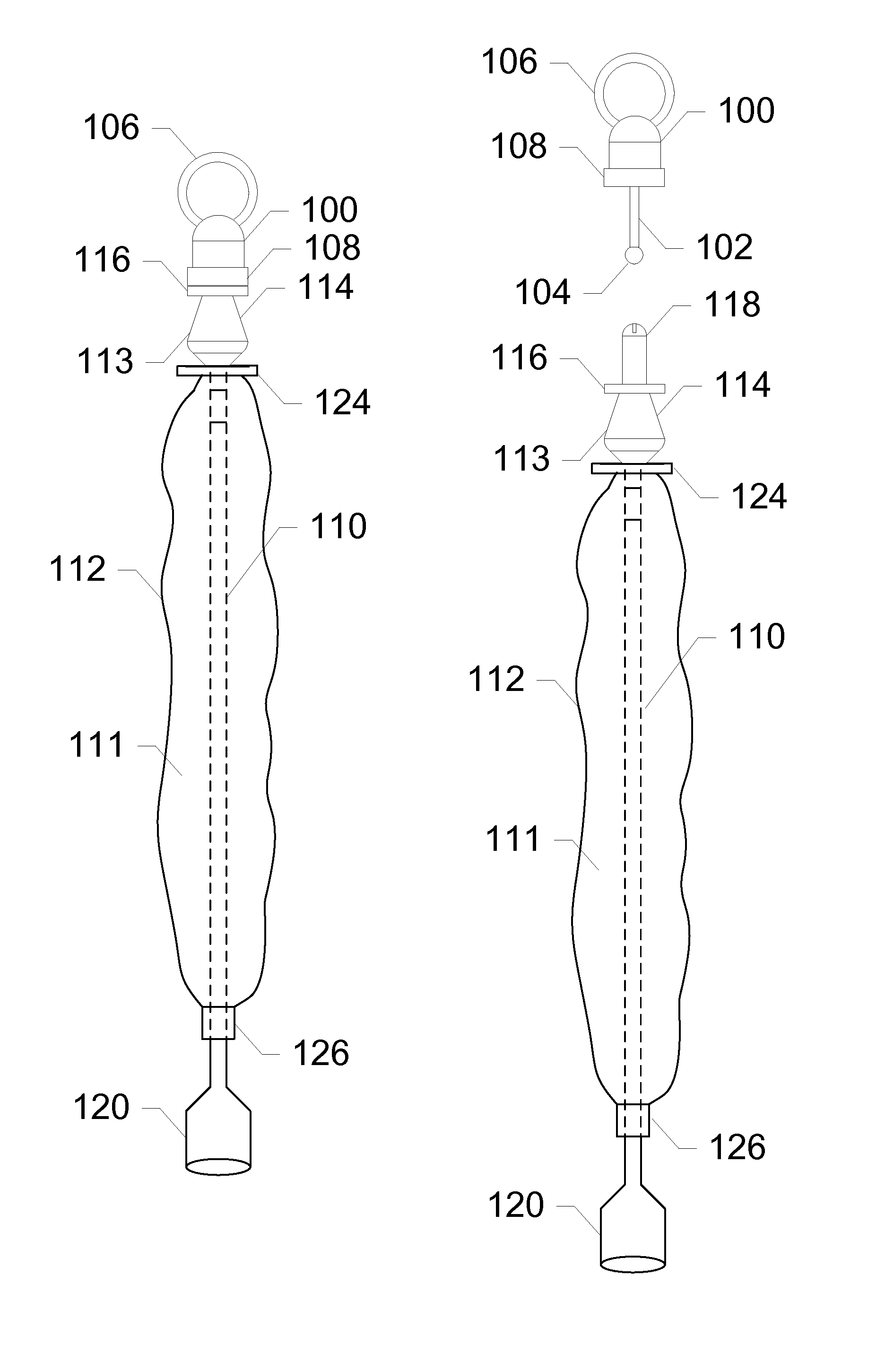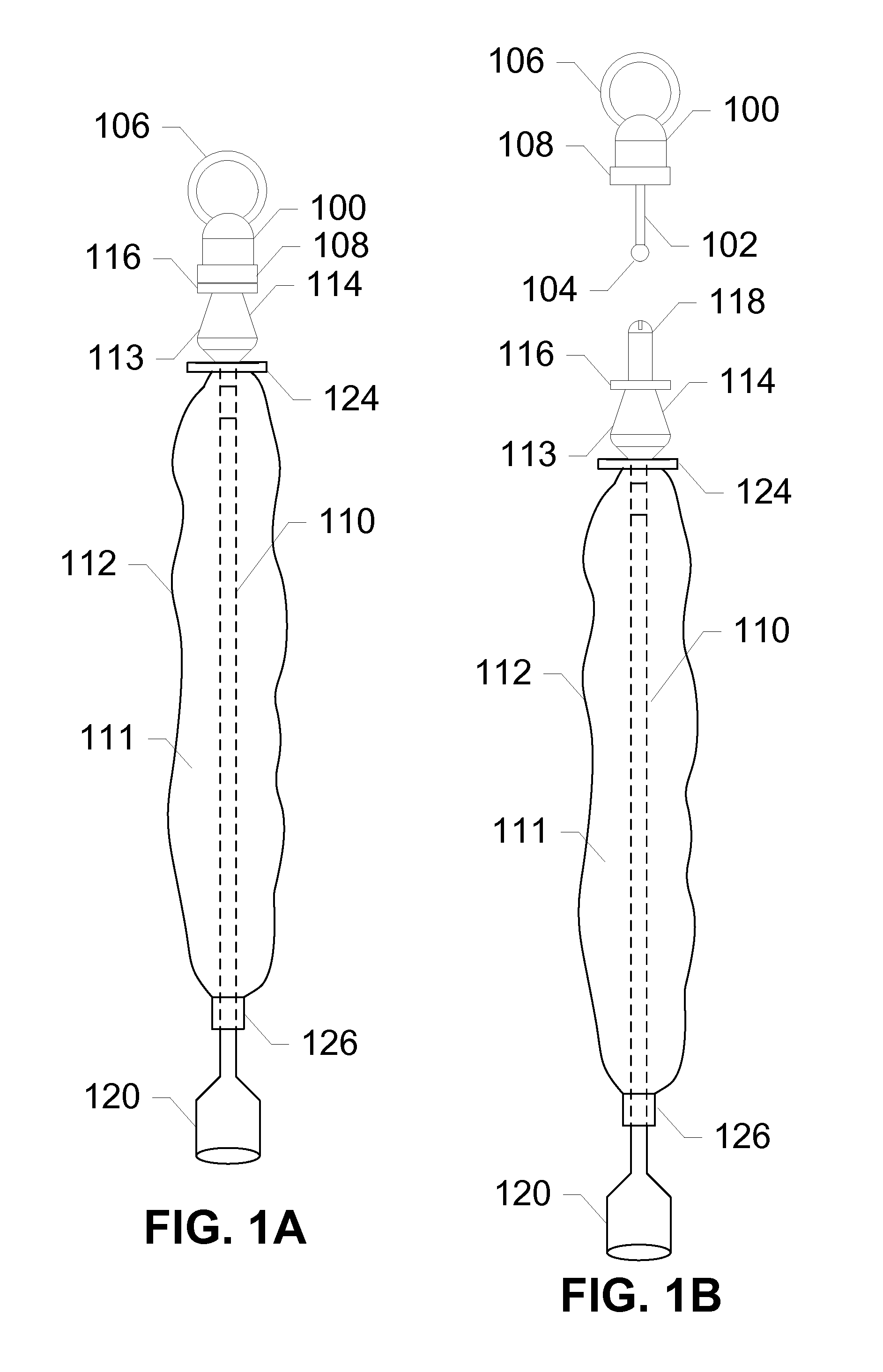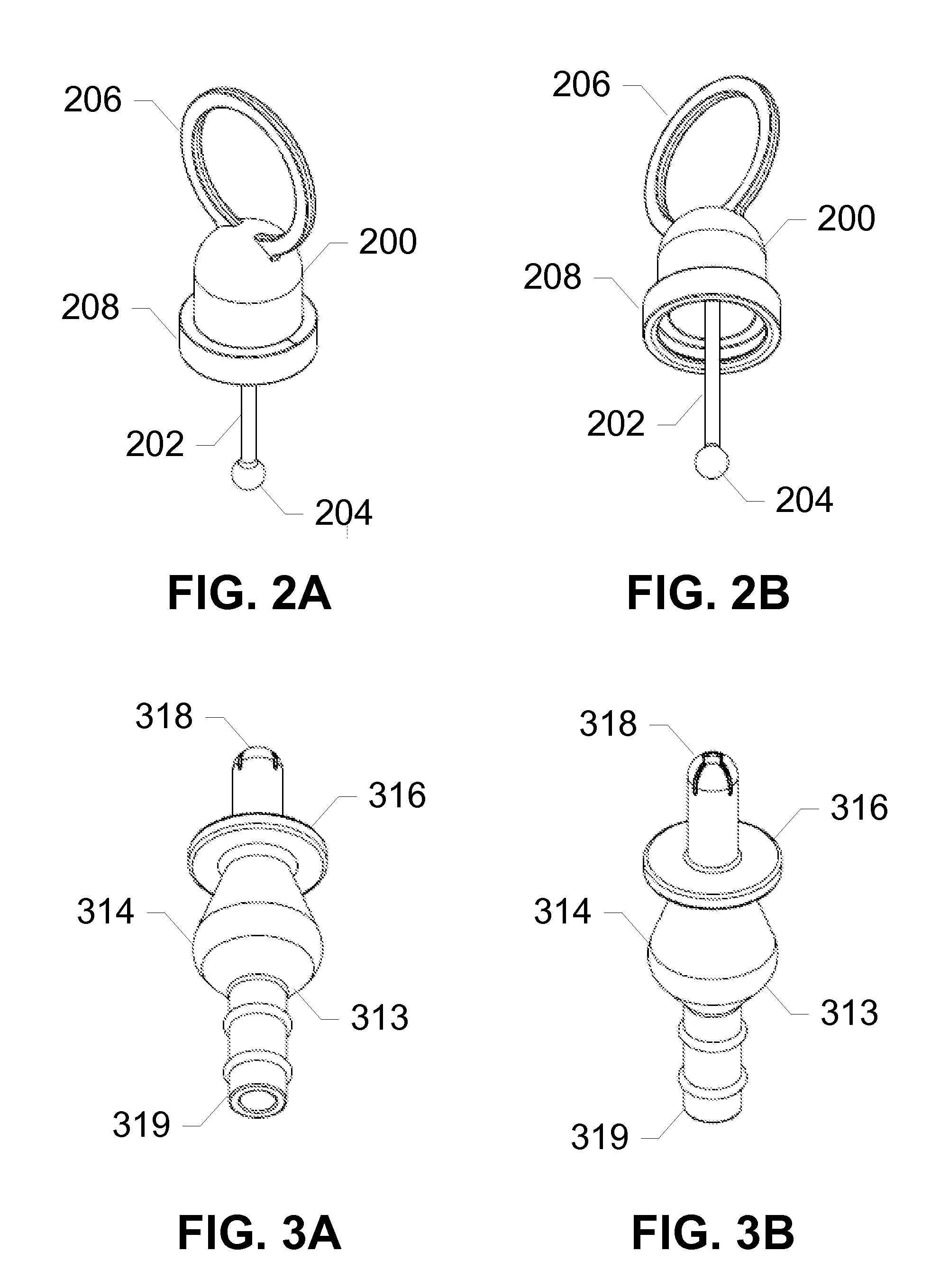Catheter reservoir seals
a catheter reservoir and seal technology, applied in the field of catheter reservoir seals, can solve the problems of long-term use of indwelling catheters, lack of satisfactory catheterization kits, and individual need for intermittent catheterization, and achieve the effect of preventing airflow
- Summary
- Abstract
- Description
- Claims
- Application Information
AI Technical Summary
Benefits of technology
Problems solved by technology
Method used
Image
Examples
Embodiment Construction
[0026]The present invention solves the problems addressed above with a catheter cap that seals a reservoir of a catheter introducer. In exemplary embodiments of the present invention, the catheter cap secures over an introducer tip to prevent airflow into the introducer tip. The catheter cap utilizes an elongated stem to block a distal opening of the reservoir to further prevent airflow. This prevents a liquid or gel contained inside the reservoir from drying or leaking. A lip of the catheter cap may further engage an insertion stop point of the catheter introducer to secure the catheter cap. The catheter cap ensures proper lubrication of the introducer tip and the catheter during insertion of the catheter into the urethra of a user.
[0027]Throughout the disclosure, components of the invention may include a proximal end and a distal end. The proximal end describes an end of the component nearest the point of insertion into the urethra of a user. The distal end describes an end of the...
PUM
 Login to View More
Login to View More Abstract
Description
Claims
Application Information
 Login to View More
Login to View More - R&D
- Intellectual Property
- Life Sciences
- Materials
- Tech Scout
- Unparalleled Data Quality
- Higher Quality Content
- 60% Fewer Hallucinations
Browse by: Latest US Patents, China's latest patents, Technical Efficacy Thesaurus, Application Domain, Technology Topic, Popular Technical Reports.
© 2025 PatSnap. All rights reserved.Legal|Privacy policy|Modern Slavery Act Transparency Statement|Sitemap|About US| Contact US: help@patsnap.com



